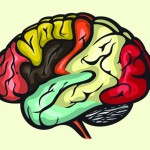
How To Brew a Cocktail That Will Make You Feel Better
Good news – you can share a cocktail and keep your distance. It couldn’t be easier – all you do is laugh (and make others laugh) and your body will naturally serve up the cocktail including...

Good news – you can share a cocktail and keep your distance. It couldn’t be easier – all you do is laugh (and make others laugh) and your body will naturally serve up the cocktail including...

There is no shortage of lists of how laughter can lead to successful business. I have included three of these in the bibliography, but I will summarize it in a few categories that I feel are most relevant. Let me start with a cautionary note – laughter is undeniably about context – no one wants to come across as the court jester.

Just to cut to the chase – I have no magic bullet to share with you – I will just give you some overview of each approach, and a few pro/cons. As with most of our topics the approach you choose – should reflect the circumstances of the situation and your personal wiring. As always I am just trying to be sure you have more than one arrow in your quiver.

November 29, 2015 ~ Written by: W.B. “Bud” Kirchner “How many of you have ever started dating because you were too lazy to commit suicide?” – Judy Tenuta Why do I think (the majority of) people will be interested in this topic? Let me put forward a fact followed by a couple related assumptions. First,...

There are volumes (I have read several) written on the neuroscience and behavioral aspects of dishonesty and its detection. I have decided to write on this topic given its importance to the integrity of relationships and transactions. In other words – it’s all part and parcel of the Business Brain Model.

May 30, 2015 ~ Written by: W.B. “Bud” Kirchner “You can fool some of the people all of the time, and all of the people some of the time, but you can not fool all the people all the time.” – Abraham Lincoln In the previous article – “How do You Know Who You Can...

November 20, 2015 ~ Written by: W.B. “Bud” Kirchner Answer: They all know more about aspects of the Business Brain Model than you do! Is this possible given your years in business and/or your higher education? Simply put – yes. “It takes considerable knowledge just to realize the extent of your own ignorance.” ~ Thomas Sowell...

The brain is made of the forebrain, midbrain and hindbrain. The forebrain contains the cerebrum, thalamus and hypothalamus (part of the limbic system). The midbrain, housing the tectum and tegmentum (and connecting the brainstem to the thalamus), is involved in input from senses. The hindbrain consists of the cerebellum, pons and medulla. The midbrain, pons and medulla, all together, are usually called the brainstem or hindbrain.